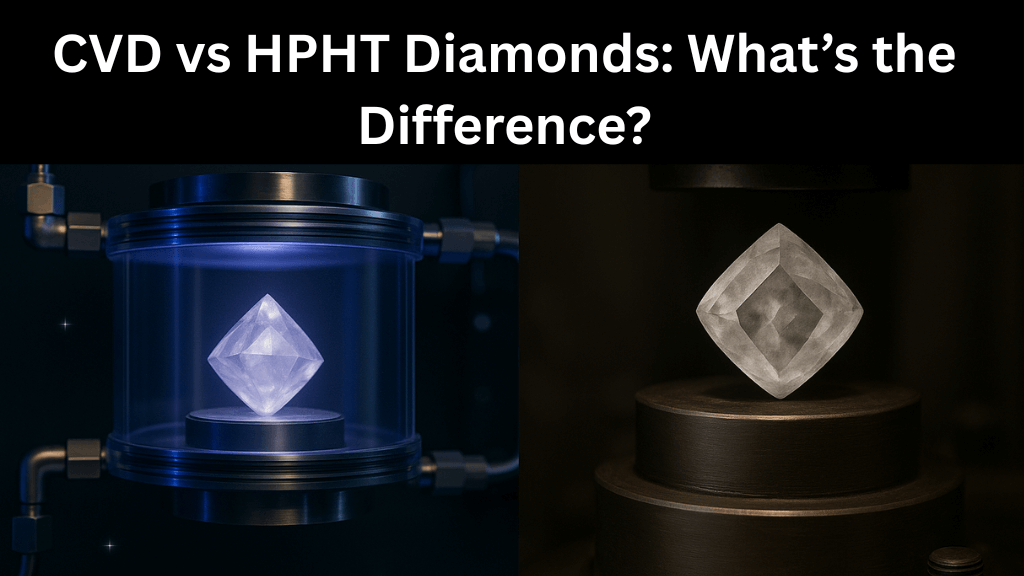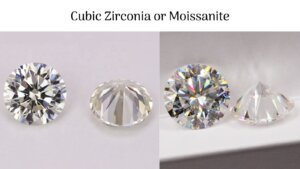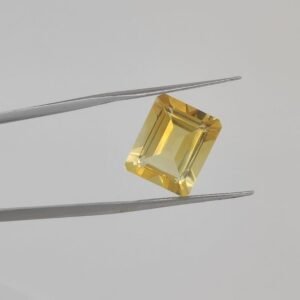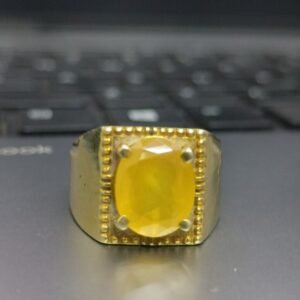In the world of diamonds, technology has introduced two revolutionary methods of diamond creation—CVD (Chemical Vapor Deposition) and HPHT (High Pressure High Temperature). These lab-grown diamonds have taken the jewelry industry by storm, offering affordable and eco-conscious alternatives to mined diamonds. But what exactly sets CVD diamonds apart from HPHT diamonds? Let’s explore how these two types differ in formation, quality, appearance, and value.
What is a CVD Diamond?

A CVD diamond is created using Chemical Vapor Deposition, a process that mimics how diamonds form in interstellar gas clouds. In this method, a thin slice of diamond seed—usually a sliver of synthetic or natural diamond—is placed in a vacuum chamber filled with carbon-rich gases. When heated to high temperatures (about 800-1200°C), the gases break down and deposit carbon atoms onto the seed, growing it layer by layer into a diamond.
This method produces diamonds that are optically, chemically, and physically identical to natural diamonds. A CVD diamond has the same hardness, brilliance, and structure as its mined counterpart, but without the environmental damage or ethical concerns.
What is an HPHT Diamond?

HPHT diamonds are created by mimicking the natural conditions under which diamonds form deep within the Earth. In a pressurized growth chamber, carbon is subjected to extremely high pressure (over 5 GPa) and high temperatures (over 1400°C). Over time, the carbon crystallizes into diamond around a small diamond seed.
This method was originally used to enhance the color of diamonds but has since evolved into a popular technique for creating high-quality synthetic diamonds.
CVD Diamond vs HPHT Diamond: Key Differences
Let’s compare the two diamond creation methods across several important aspects:
1. Growth Environment
- CVD Diamond: Grown in a low-pressure, high-temperature environment. Carbon atoms are deposited on a substrate in a vacuum chamber.
- HPHT Diamond: Formed under extremely high pressure and temperature, simulating the natural growth process inside the Earth.
2. Growth Time
- CVD Diamond: Takes a few weeks to grow, depending on size and quality.
- HPHT Diamond: Growth is generally faster than CVD, sometimes taking just a few days for a single stone.
3. Color and Clarity
- CVD Diamond: Initially, CVD diamonds may appear brown or gray due to impurities, but can be treated to enhance clarity and color. Today, technology allows most CVD diamonds to be grown as colorless or near-colorless.
- HPHT Diamond: Naturally tends to have a yellow or brown hue, though some HPHT diamonds are nearly colorless. HPHT can also be used to remove tints in both lab-grown and natural diamonds.
4. Inclusions and Impurities
- CVD Diamond: Often shows “strain lines” or graining under magnification. Metallic inclusions are rare.
- HPHT Diamond: May include metallic inclusions and more internal stress, which can affect clarity.
5. Shape and Size
- CVD Diamond: Often grown as flat, tabular crystals, allowing for more uniform shapes and better control over carat sizes.
- HPHT Diamond: Usually grown in cuboctahedral shapes, which can sometimes lead to uneven or asymmetrical cuts.
Visual and Physical Differences
To the naked eye, both CVD diamonds and HPHT diamonds appear identical to natural diamonds. It’s only under professional equipment, such as spectroscopy or magnification, that gemologists can identify their origins.
However, there are subtle differences:
- CVD diamonds may show a “layered” growth pattern under UV light.
- HPHT diamonds might exhibit phosphorescence—a glow after the UV light source is removed.
Despite these microscopic traits, consumers will not notice any difference in sparkle, brilliance, or fire between the two.
Price and Value
When it comes to pricing, both CVD and HPHT diamonds are significantly more affordable than mined diamonds. However, CVD diamonds often cost slightly less than HPHT diamonds due to lower production costs and higher yield efficiency.
It’s important to note that the resale value for both types of lab-grown diamonds is currently lower than that of natural diamonds. But for buyers seeking an ethical, sustainable, and cost-effective alternative, both options offer great value.
Environmental and Ethical Impact
One of the most compelling reasons consumers are turning to lab-grown diamonds is the environmental and ethical aspect.
- CVD diamonds have a lower carbon footprint since the process uses less energy and can be powered by renewable sources.
- HPHT diamond production is more energy-intensive due to the extreme pressures and temperatures required.
Neither type involves mining, meaning both avoid the ethical concerns tied to conflict or “blood” diamonds.
Which One Should You Choose?
Both CVD diamond and HPHT diamonds are stunning choices with their own set of advantages. The right option depends on your priorities:
- If you prefer better control over clarity and shape, CVD diamond may be the right pick.
- If you want a diamond closer to the natural formation process, HPHT might appeal to you.
In either case, both types are genuine diamonds, certified by leading gemological labs such as IGI and GIA.
How to Identify a CVD Diamond
If you’re specifically looking for a CVD diamond, here are a few tips:
- Ask for Certification: Always request certification from reputable labs. The certificate will indicate whether it’s CVD or HPHT.
- UV Testing: CVD diamonds sometimes show unique fluorescence or growth patterns under UV light.
- Consult a Professional: Jewelers or gemologists with advanced equipment can easily identify the origin of a diamond.












